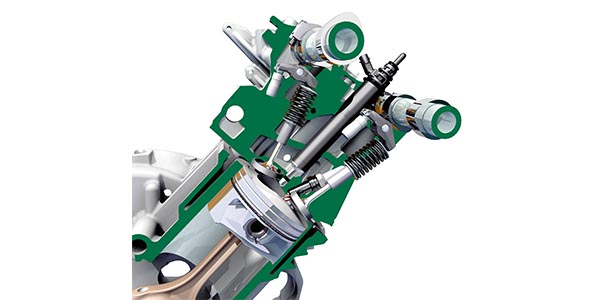
In the 1980s, many race series were experimenting with turbochargers on stock block and specialty race engines. Huge horsepower and torque numbers could be produced for a short period until the engine self-destructed. What a lot of the engineers and engine builders could not see was at peak cylinder pressures the head was distorting the casting and allowing combustion gases to get in between the head, gasket and block.
New technologies like direct injection, variable valve timing and turbocharging are pushing chamber pressures far beyond what they were a decade ago.
What Is Head Lift?
Head lift is not the whole head that is lifting from the block, but is a distortion in specific areas of the head and block interface where the head gasket is installed. This distortion can damage the head gaskets and head bolts.
It is not a constant running condition, but occurs in milliseconds under the high-stress conditions where the greatest combustion chamber pressures are experienced. As the incidents of head lift add up, the head gasket and fasteners will be fatigued and eventually damaged.
What You Can’t Control
Unless you own an engine foundry and laboratory, there is a limit to the combustion pressures an engine can contain. But, knowing the trends that are influencing head lift can help you spot a head lift problem.
Late-model engines have increased compression ratios to new levels. During the past decade, compression ratios have risen from a mild 8.5 to 9:1 to an average of 11.5:1 to 12:1 for most naturally-aspirated production engines. For turbocharged engines, the compression ratios have risen from an average of 8.0:1 to an amazing 9.5:1-10:1.
These high compression ratios are possible because the air, fuel and spark are tightly controlled. Most modern engines dance on a razor’s edge between a lean combustion event and a misfire. This edge is where the most power, efficiency and lowest emissions can be reaped.
Some direct injection engines can run air/fuel ratios as high as 65:1 for limited periods of time. Unfortunately, these air/fuel ratios are where the peak combustion pressures and temperatures are experienced by the engine.
The other factor you can’t control is the design of the engine. Technicians and engine builders can’t control how the head is cast or the design of the deck of the block. But, there are replacement gaskets, head bolts and other parts that improve the factory design.
What You Can Control
The key to preventing head lift is to control incidents that cause high cylinder pressures and temperatures. If a head lift problem has caused a head gasket problem, you can control the surfaces finishes, gasket selection and clamping forces.
Head lift is not a constant condition. It typically occurs when factors fall outside of normal combustion. These conditions include pre-ignition and lean combustion events. Both conditions can cause sudden spikes in combustion chamber pressures.
Another factor you can control is the installation of the gasket. Head gaskets can also leak or fail if the head bolts are not tightened in the proper sequence or stages, or to the recommended torque value and/or angle.
On late-model engines with Torque-To-Yield (TTY) head bolts, reusing TTY bolts that have already been stretched once is asking for trouble because using them again increases the risk of the bolt failing when it is stretched beyond its initial design limits.
Many aftermarket MLS head gaskets can handle up to 60 to 70 microinches roughness average (RA). Even so, the recommended finish for some aftermarket MLS gaskets may be 30 RA or less depending on the application and the thickness of the rubber coating on the gasket. Most OE MLS gaskets have a relatively thin outer coating and require mirror-like finishes on the block and head deck surfaces that are usually 20 RA or less.
Article courtesy Underhood Service.













